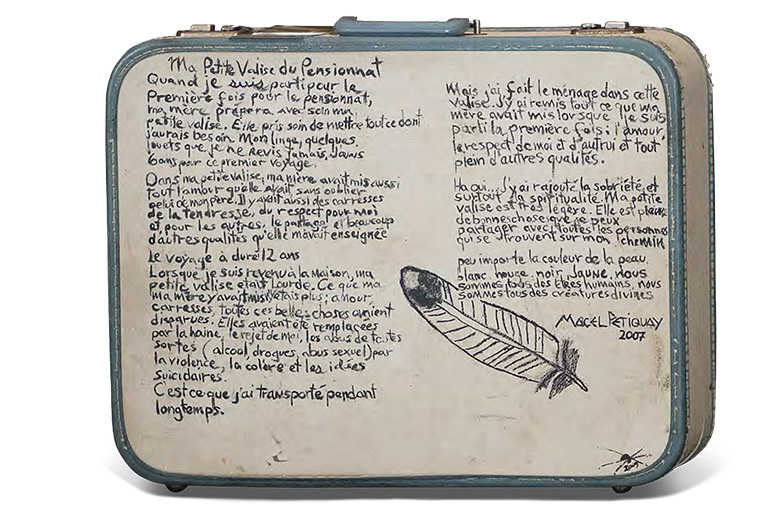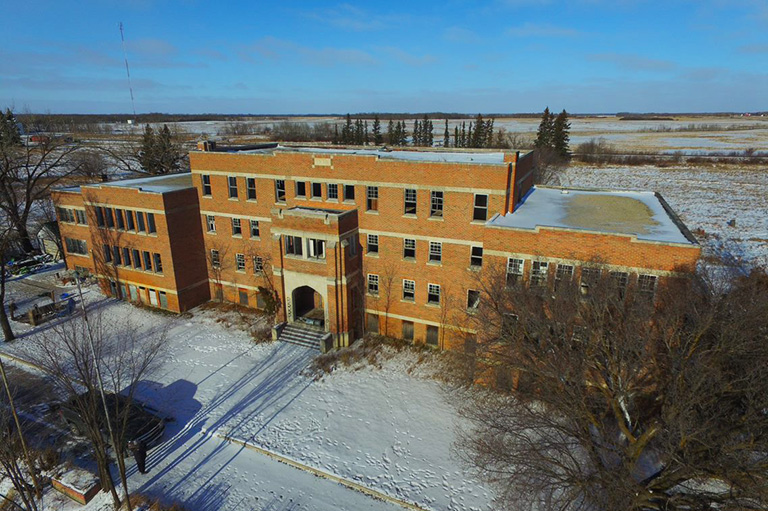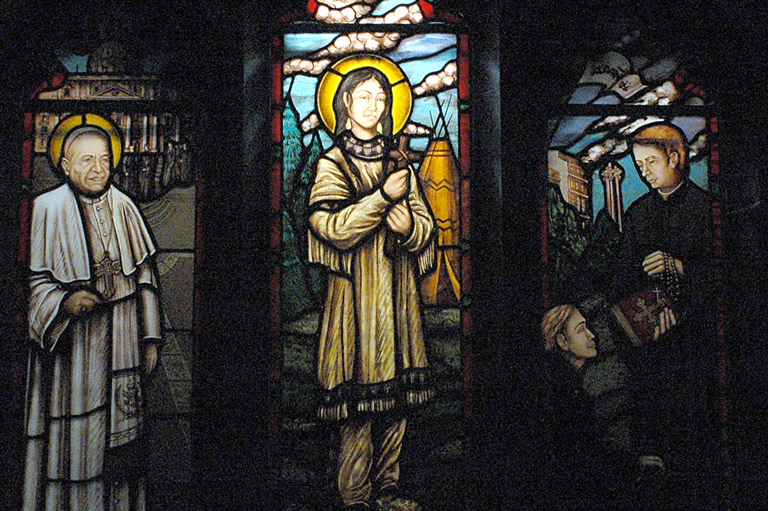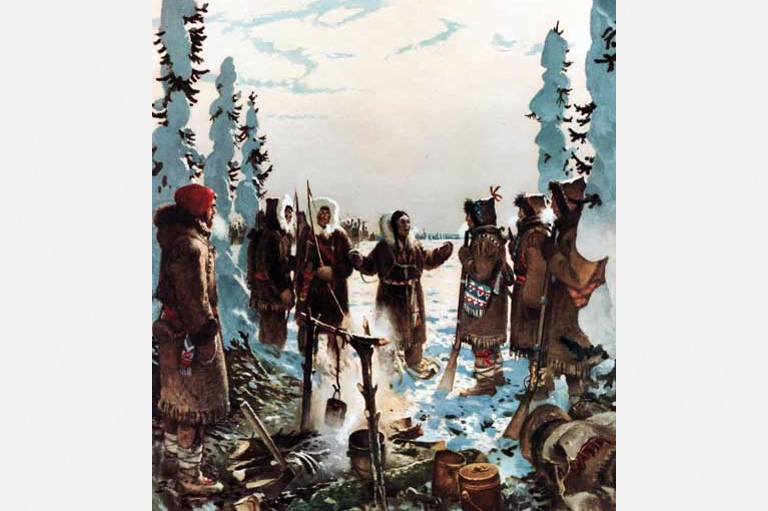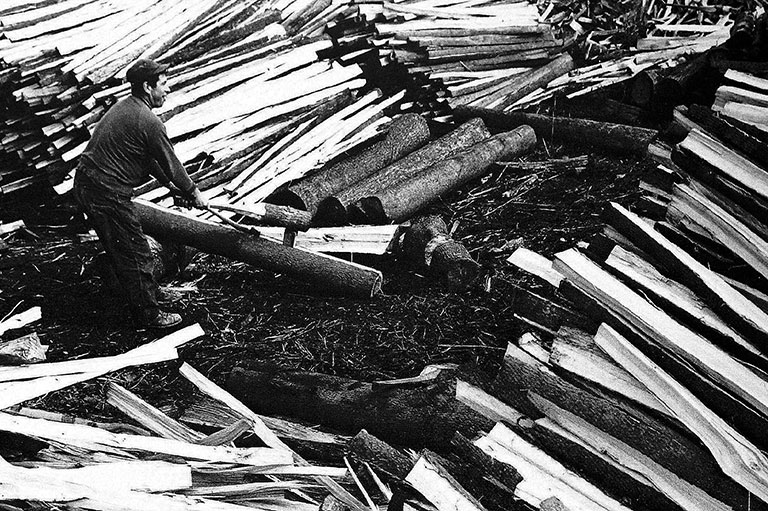A National Crime
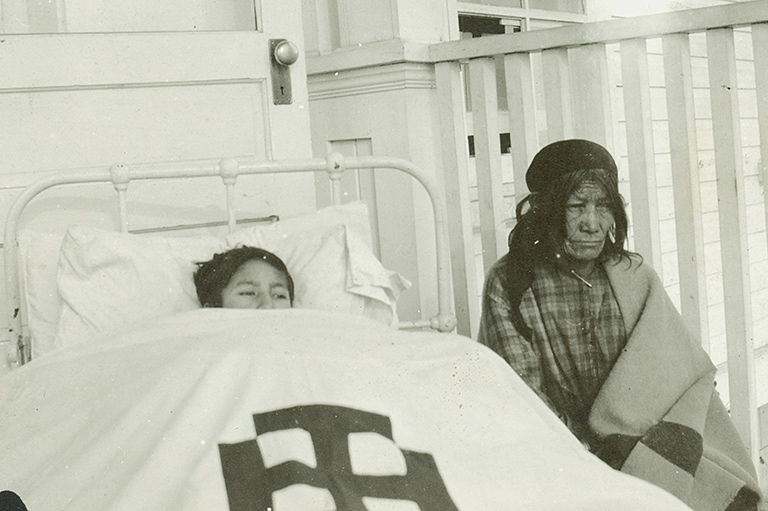
No one wanted to listen to Dr. Peter Henderson Bryce. He documented the truth, reported the facts about residential schools, and faced opposition from the most powerful entities of his time — the Canadian government and the leading Christian churches: Catholic, Anglican, Methodist, and Presbyterian.
In 1922, Bryce, the former chief medical officer for the Department of the Interior and the Department of Indian Affairs, published and distributed The Story of a National Crime, being an Appeal for Justice to the Indians of Canada, a document so powerful that its words rang out to the hearts and minds of his intended audience — the Canadian public — and still ring out to the descendants of those whose story he wanted to share.
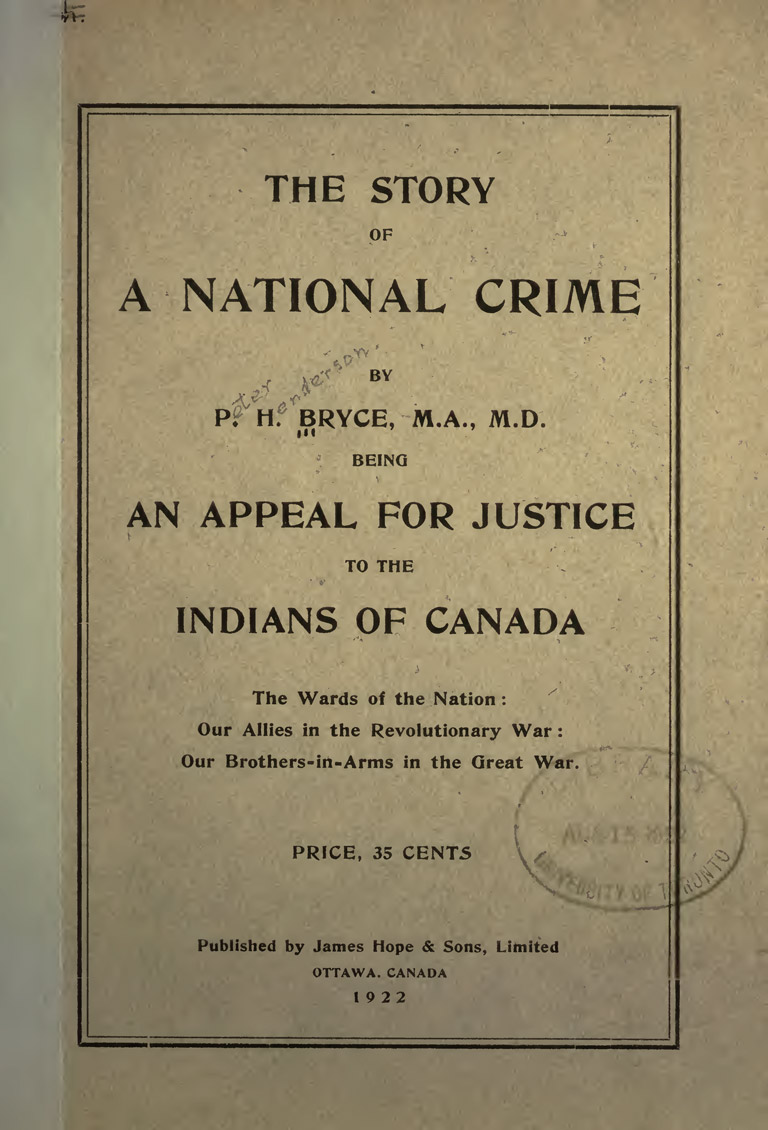
In it, Bryce — who wrote annual reports on the “health of the Indians” from 1904 until he was sidelined by Deputy Superintendent of Indian Affairs Duncan Campbell Scott in 1914 — went public with the findings from his years of investigations into the terrible conditions that Indigenous children endured in residential schools in Western Canada. Bryce found extraordinarily elevated rates of tuberculosis and shockingly high mortality among children who attended industrial and boarding schools, most of which were run by the Catholic and Anglican churches.
At the time, tuberculosis was one of the leading causes of death in Canada. Although the contagious disease affected all populations, it struck hardest among those who were poor, malnourished, and lived in crowded, unsanitary conditions. In addition to his findings at residential schools, Bryce also discovered that TB illness and death rates were many times higher on Indigenous reserves than among Canadians in general; yet the funding for care and treatment of Indigenous people was many times lower. The purpose of his report, written after he was forced to retire from the federal civil service in 1921, was to expose the Canadian government’s inaction and to blow the whistle on what he described as a national crime. “It is indeed pitiable that … this trail of disease and death has gone on almost unchecked by any serious efforts on the part of the Department of Indian Affairs, placed by the BNA Act especially in charge of our Indian population,” he wrote.
The first time I tried to read Bryce’s pamphlet, I could not get through it, even though the document consists of fewer than twenty pages. The weight of the words, and the depths of truths revealed in Bryce’s statistics, were too much to bear in one sitting. For Indigenous people — especially the survivors of the Indian residential school system and those of us who are their descendants — the horrific truth laid bare in this thin text is one we feel deeply within our hearts, our minds, and our spirits.
These events did not occur a long time ago: My grandmother went to a residential school during the time described by Bryce. Bryce’s findings were not, in the parlance of our times, “fake news.” Yet he encountered entrenched resistance, and the residential school system continued to operate for decades longer.
As Indigenous people, this is a living, breathing history that we carry upon our shoulders, and what we look for in this age of reconciliation are allies who will begin to bear the weight of history upon their own shoulders. The centennial of Bryce’s report comes at a critical moment, with the ongoing identification of hundreds of graves on residential school sites and an historic apology by Pope Francis to Indigenous people on July 25, after he visited the former site of the Ermineskin Indian Residential School in Maskwacis, Alberta. The pontiff acknowledged the role the church played in partnership with the government. “I am sorry. I ask forgiveness, in particular, for the ways in which many members of the church and of religious communities co-operated, not least through their indifference, in projects of cultural destruction and forced assimilation promoted by the governments of that time, which culminated in the system of residential schools.”
With 7 uniquely curated newsletters to choose from, we have something for everyone.
Long before there was a Canada — before the current national borders had been established on the continent — missionary schools began the indoctrination of Indigenous children as churches spread across North America. The Jesuits, the most important of the Catholic missionary orders, arrived in what was then known as New France in 1625. As European settlement and Christian missions spread westward over the following centuries, nuns and priests established several non-residential mission schools for Indigenous children. The first residential school — the Anglican Church’s Mohawk Institute in Brantford, Ontario — began operating in 1831. By the time of Confederation in 1867 — when the British North America Act assigned the federal government jurisdiction over “Indians, and Lands reserved for the Indians” — churches were operating a small number of boarding schools for Indigenous children.
A decade later, in 1876, the Indian Act became law. Over the following years and decades, the Indian Act expanded to the point where it controlled all aspects of First Nations life, including education. By 1880 the role of the Catholic and Protestant churches in running schools on reserves was explicitly stated in the act — enshrining co-operation between the churches and the state to place Indigenous children in institutions. The churches, with their missionary efforts, were already the primary means of European-inspired education for Indigenous children.
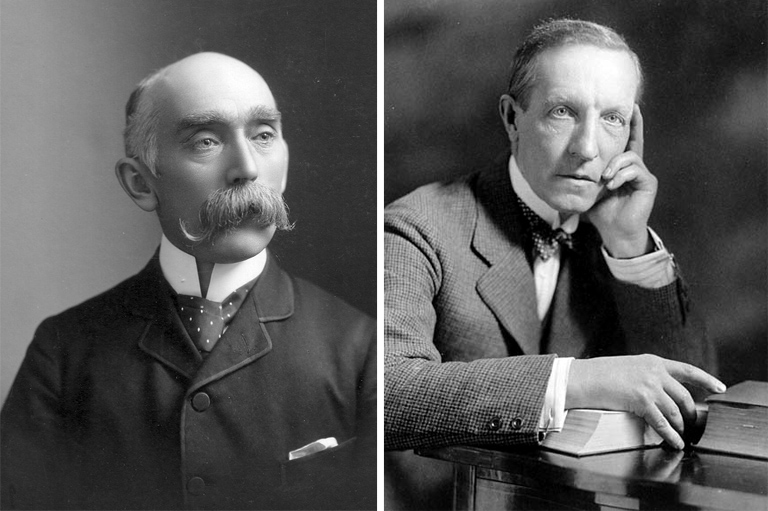
In 1904, Bryce, an Ontario physician, was appointed as the chief medical officer of the federal Department of the Interior and Department of Indian Affairs, following a twenty-two-year stint leading the Ontario Board of Health. In 1907, the minister of the interior asked him to inspect thirty-five Indian residential schools in Alberta, Manitoba, and Saskatchewan, and Bryce composed a special internal report on the deplorable conditions he observed. The Report on the Indian Schools of Manitoba and the Northwest Territories was based on data gathered by surveying the principals and by personally inspecting the schools, which included eight industrial schools and twenty-seven boarding schools. The report revealed that, due to rampant tuberculosis, in the fifteen schools that reported full statistics, “24 percent of all the pupils [who] had been in the schools were known to be dead,” while at one school on the File Hills reserve, sixty-nine per cent of students who had attended the school since its opening in 1889 were dead by 1907. Decrying the insufficient ventilation and lack of fresh air in the schoolrooms and dormitories, where sick children were housed together with healthy ones, he wrote: “We have created a situation so dangerous to health that I was often surprised that the results were not even worse than they have been shown statistically to be.”
There was, however, a louder, more powerful voice at the time, and it belonged to Duncan Campbell Scott. Already venerated as one of Canada’s “Confederation poets” — a group of English-language poets whose work helped to create the founding myth of Canada — Scott took charge of the Department of Indian Affairs as deputy superintendent in 1913, after having worked there since 1879. He ran the department for almost twenty years, until his retirement in 1932.
Bryce spent the years between 1904 and 1914 gathering statistics on the health of Indigenous children and adults, both in schools and on reserves. But Scott blocked their release and refused to act on Bryce’s recommendations to control tuberculosis through sanitary improvements and more frequent health inspections by local doctors. In A National Crime, Bryce contended that “owing to the active opposition of Mr. D.C. Scott, and his advice to the then Deputy Minister, no action was taken by the Department to give effect to the recommendations made.” He further stated that Scott’s intervention had prevented his 1907 report from “becoming a matter of critical discussion at the annual meeting of the National Tuberculosis Association in 1910.” After Scott assumed control of the Department of Indian Affairs in 1913, he halted Bryce’s investigations altogether, claiming in a letter reproduced in A National Crime that Bryce had not been employed by the department since a bureaucratic reorganization in 1908 — a gesture Bryce described as “transparent hypocrisy,” since Bryce had, in fact, continued preparing annual reports for the department until Scott terminated the practice.
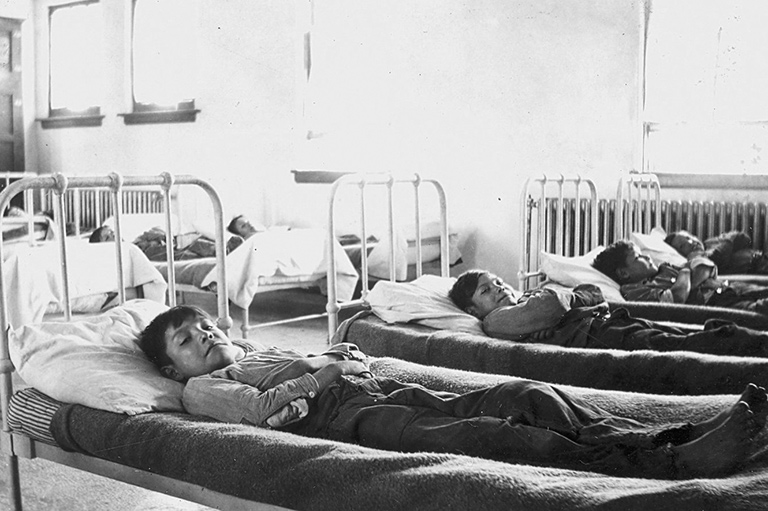
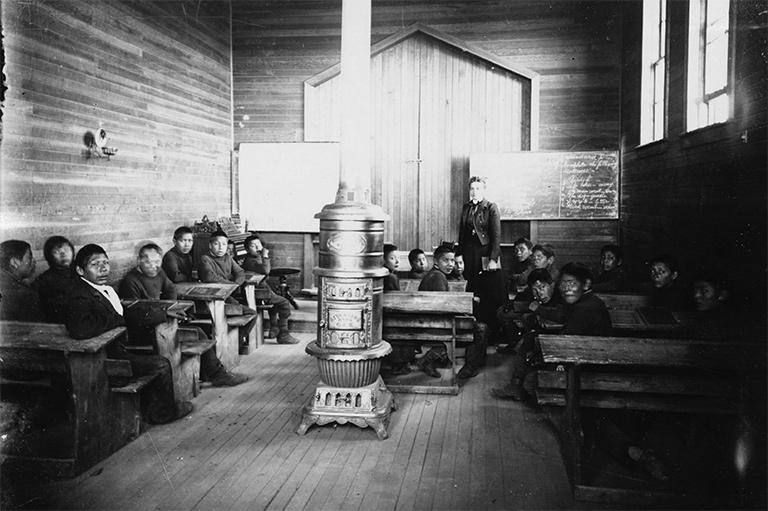
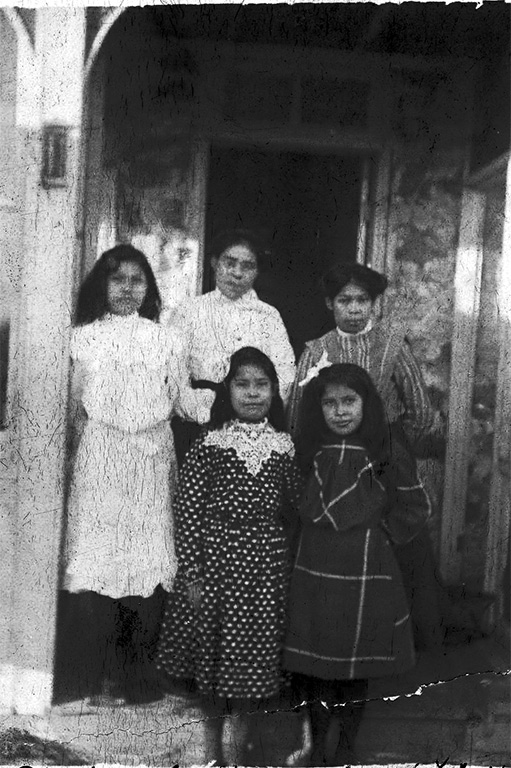
Although few people today could quote his poetry, Scott’s description of the intent of the Indian residential school system to commit a cultural genocide of First Nations people will live on in infamy. Speaking to a parliamentary committee in 1920 in favour of his proposed amendments to the Indian Act, he stated: “Our objective is to continue until there is not a single Indian in Canada that has not been absorbed into the body politic and there is no Indian question and no Indian Department.” The Indian Act amendments of 1919–20, which were passed by Parliament, included one that forced all Indigenous children between the ages of seven and fifteen to attend “such day, industrial or boarding school as may be designated by the Superintendent General.” The amendments gave a truant officer “the authority to enter any place where he has reason to believe there are Indian children.” Parents who refused the truant officer’s orders to send a child to school would be punished with a two-dollar fine or ten days imprisonment, or both, and the act decreed that “such child may be arrested without a warrant and conveyed to the school by the truant officer.”
With the amendment to the Indian Act that made attendance compulsory, Scott and the Canadian government forced children to attend schools that they knew, based on Bryce’s reports, to be disease-ridden and unsafe. In A National Crime, Bryce decried “the degree and extent of [the government’s] criminal disregard for the treaty pledges to guard the welfare of the Indian wards of the nation.”
When Bryce released A National Crime, commentators predicted controversy. As the Vancouver Province reported on a debate over the document in the House of Commons: “Fireworks were anticipated as all the members of the House were armed with [the] pamphlet.”
The report, continued the article, was “designed to show that the Indians of Canada are sadly neglected and being wiped out by tuberculosis. The minister admitted during the discussion of the estimates that the Indians had not been looked after as they should be and intimated that more money would be required for medical and educational purposes….[It] would seem to be not too soon for the department to waken up. Doctor Bryce lays much of the blame at the door of Mr. Duncan Campbell Scott the poet who is deputy minister of the department.”
Save as much as 40% off the cover price! 4 issues per year as low as $29.95. Available in print and digital. Tariff-exempt!
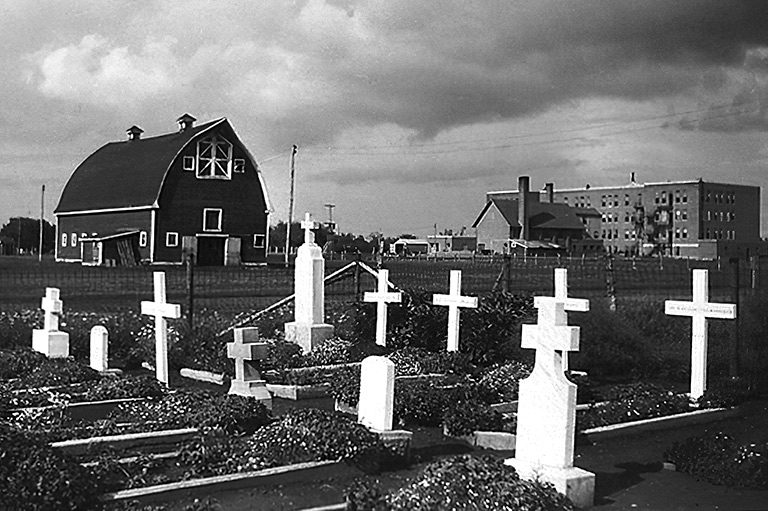
For Indigenous people, it took a long time to come to terms with what had happened. Many did not want to face the truth. They lived with it. Those terrible experiences seeped into their souls and spirits, and they expressed their rage by beating and punishing the ones they loved.
My grandmother Lydia survived the Norway House Indian Residential School in Norway House, Manitoba. None of her grandchildren knew about her experiences before she passed away. I visited the town of Dauphin, Manitoba, which had its own residential school, dozens of times and spent some weekends there at my Auntie Lily’s place in the summer and during all-Native hockey tournaments. Dauphin has a population of just over eight thousand and is served by two main roads. Yet I have no memory of the residential school, which was in operation there from 1914 to 1988. It was never talked about, as though the entire history had been washed away, just as Bryce’s work was shelved and largely forgotten until the early 1990s.
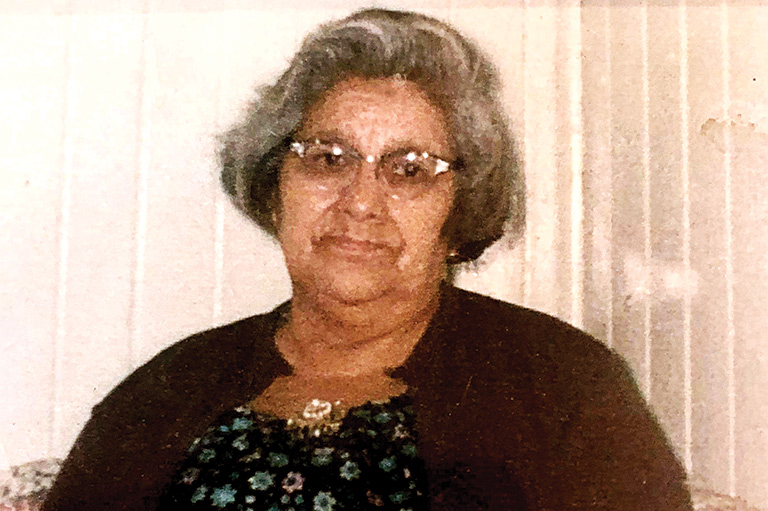
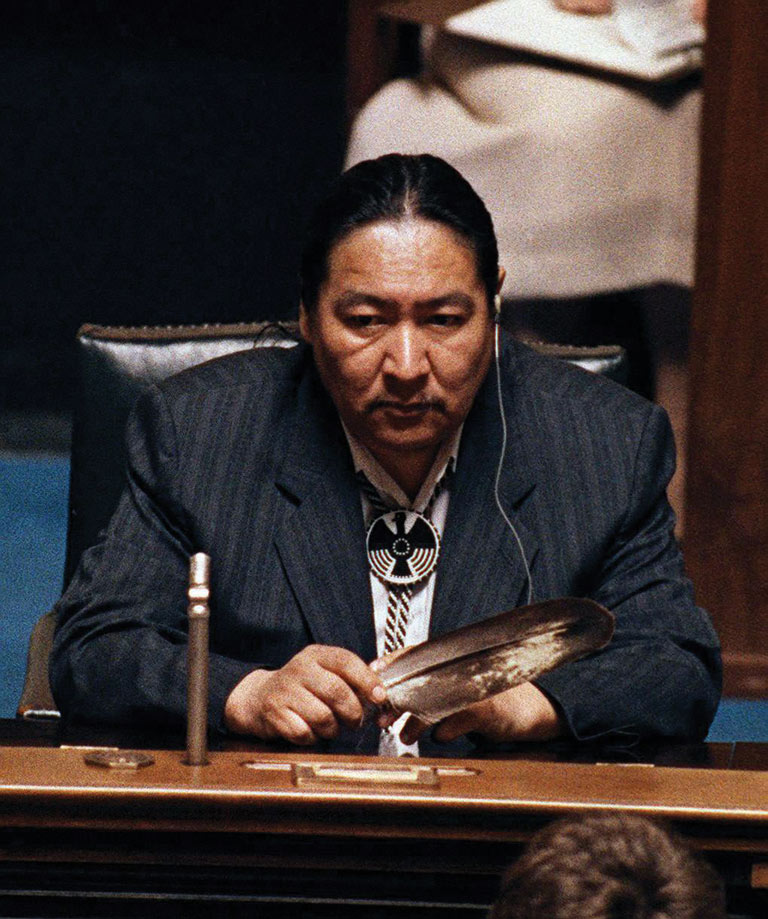
The early 1990s proved to be a pivotal time in Indigenous-Canadian history. In June 1990 Elijah Harper, a Manitoba MLA, sat in the legislature with an eagle feather in his hand and refused to support the Meech Lake Accord because it did not address the rights of First Nations within Confederation, thereby ending a constitutional-reform process that required unanimous provincial support. As Harper said of the debate: “It was one of the few times in Canadian history that the difficulties of Aboriginal people have been the focus of attention, [and] it is one of the few times in history that unfairness of our systems as they affect Aboriginal peoples has been detailed.”
A month later, a blockade set up to prevent a golf course from expanding on Kanesatake Mohawk territory west of Montreal set off the seventy-eight-day Oka crisis. Later that fall, in an October 30 interview with CBC journalist Barbara Frum, Phil Fontaine, the Grand Chief of the Assembly of Manitoba Chiefs, disclosed the physical and sexual abuse he had survived at the Fort Alexander Indian Residential School in Manitoba.
By then, Indigenous people had started exposing historical truths, initially with the Red Power movement in the 1960s, with the art, music, and action of the 1970s, and then with the sobriety movement of the 1980s and 1990s. As the numbers of people gathering to heal from addiction grew, they found their stories were not only similar but traced back to the institutions that had existed in Canada for generations. The conditions in the residential schools, deemed a national crime by Bryce, were one source of the trauma, the violence, and the shame.
The more Indigenous people talked about their histories, the more they began to reveal the truths that had been hidden from the world and denied within themselves. These revelations were part of an Indigenous renaissance that has seen people returning to their own traditions, ceremonies, languages, arts, and music.
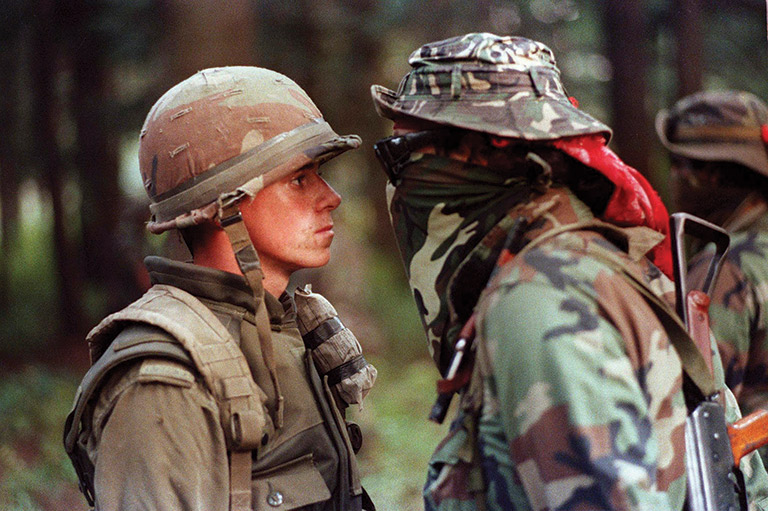
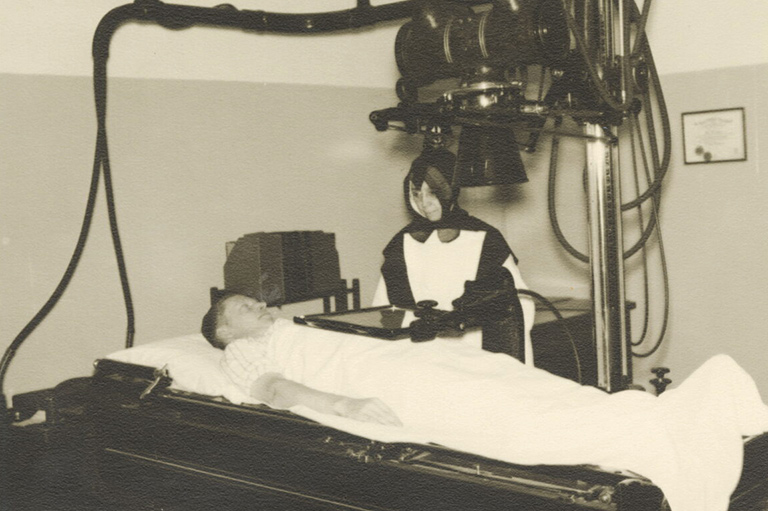
The Royal Commission on Aboriginal Peoples (RCAP), established in the aftermath of the Oka crisis, revealed many more stories that had long been forgotten, ignored, or covered up, including stories about the schools. During its work, commission historian John Milloy unearthed Bryce’s pamphlet, and he cited its findings in the final report.
The commission’s work documented the violence and addiction suffered by Indigenous people, as well as the trauma caused not only by the residential school system but also by the loss of land and livelihood and by the destruction of traditional territories and waters for mining, timber, and hydroelectric development. The RCAP report remains the definitive document of Indigenous-Canadian relations.
The trauma detailed in those pages led to the creation of the Aboriginal Healing Foundation (AHF), which supported community-based Aboriginal-directed healing initiatives to address the legacy of the physical and sexual abuse suffered in Canada’s Indian residential school system, including intergenerational impacts. It had an eleven-year mandate that ended in 2009.
I was the AHF’s director of communications for two years, but I arrived at the end of winter in 2006 as the foundation was winding down. Its work, coupled with media stories as well as community and kitchen-table discussions, encouraged people to speak out and to seek funding for their communities. There were rumours of new money from the federal government to fund new programming and to continue the work of hundreds of front-line programs in First Nations, Métis, and Inuit communities across Canada. Those funds did not materialize.
There was so much to hear. The phone would ring at the AHF office, and as soon as the conversation started I knew that I was about to hear the worst thing that had ever happened to the person who was calling. The foundation was helping people heal from trauma, but for many the first step was that they just wanted to be heard. They wanted someone to believe them. The truth had set them free, and they needed to speak their truth freely — but it was so hard to find someone who would listen.
I also didn’t know my own story, or how my grandmother Lydia had survived. I didn’t know it when she was alive. When I found out later that she had attended residential school, I didn’t know how the experience had affected her — and I still don’t. Even after the Truth and Reconciliation Commission of Canada’s work, the evidence is still being discovered, uncovered, and recovered. In recent years, through discussions with survivors, I have learned of nutritional, medical, and pharmaceutical experiments performed on Indigenous children, as well as tortures such as electric chairs and isolation closets.
I don’t want to know too much about what happened in the school my grandmother Lydia attended; it is too much to bear. But I have realized how much my youngest daughter looks like Lydia, and how she carries her warmth and grace. One day I imagined her walking the hallways of that place, and I began to cry.
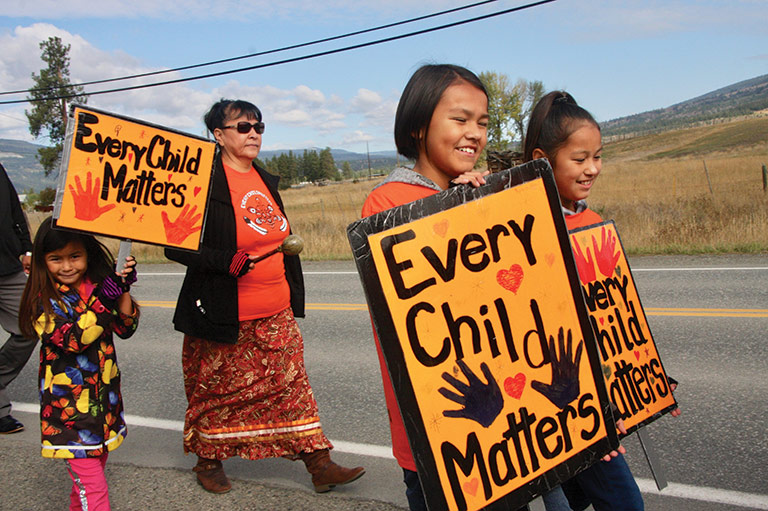
Cindy Blackstock — the executive director of the First Nations Child and Family Caring Society and a member of the Gitxsan First Nation — says Bryce’s work remains relevant. Blackstock and her society, along with the Assembly of First Nations, fought a fifteen-year legal battle claiming that the federal government violated the human rights of First Nations children in foster care by providing them less funding than the amount provided to non-Indigenous children. The battle ended in a $40-billion agreement in principle, under which the government promised to reform the system and to provide compensation to affected children and families.
“The federal and provincial governments have frequently known better and chosen not to do better for First Nations, Métis, and Inuit children, which has produced, and continues to produce, devastating results,” Blackstock said. “The public has often known about the injustices, the remedies to fix them, and has even been outraged by government inaction, but these injustices have not held public attention long enough to force the government to act.”
She continued: “Thousands of caring Canadians wore orange shirts in the wake of the discovery of children in unmarked graves last summer, and in response the federal government implemented more [of the] Truth and Reconciliation Commission’s calls to action in a couple of months than they had in the previous six years…. Each of us needs to read the TRC calls to action, and send them to all of our elected officials, and ask them what they are personally doing to implement them, and to keep writing until change happens.”
In this age of reconciliation, we must reconcile our shared history. Indigenous people are still living a reality that the rest of the country has conveniently placed in the past. This is a living history, and the work and words of Dr. Peter Henderson Bryce still need to be heard as shrill as a whistle that has been blowing for a hundred years towards his intended audience — the Canadian public.
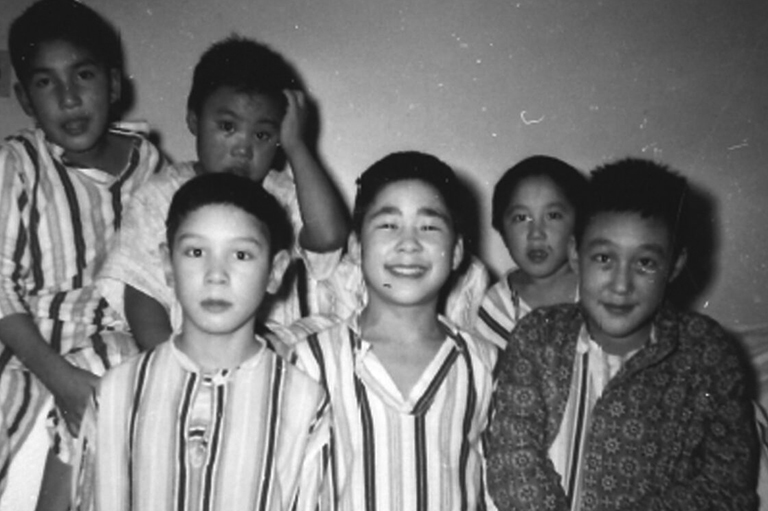
Searching for answers
It was called “Indian TB,” and it was believed to be a separate, highly virulent form of tuberculosis. Health authorities viewed the disease as a menace to the general population, so in the 1930s the federal government began to create hospitals and sanatoriums exclusively for Indigenous people.
The institutions were budgeted to operate at half the cost of regular medical facilities. They were drafty in winter, hot in summer, and infested with vermin, according to the Manitoba Indigenous Tuberculosis History Project (MITHP), a research project based at the University of Winnipeg.
Despite these conditions, Manitoba newspapers in the 1930s and 1940s “assured the public that the ‘threat’ of Indian TB was being managed,” the MITHP says on its new website, IndigenousTBHistory.ca.
The histories of the segregated TB hospitals and of residential schools frequently intersect. Many children contracted TB — an airborne pathogen that commonly attacks the lungs — while attending the overcrowded schools. The bacteria that cause tuberculosis can remain latent in the body for many years, and deaths due to TB can occur months or years after the onset of symptoms.
Indigenous TB patients from remote northern Manitoba communities were often sent to institutions in the south. Fifty years after the last facility in Manitoba was closed, the burial sites of many patients remain unknown to their families. The MITHP website includes a searchable photo database of former Manitoba patients and a research guide.
“Indigenous individuals in the photos are rarely named, and often the hospitals are unknown as well,” said Erin Millions, the project’s research director and a historian at the University of Winnipeg.
People are asked to contact the project if they see someone they know in the photos. — Nelle Oosterom
Canada's History magazine was established in 1920 as The Beaver, a Journal of Progress. In its early years, the magazine focused on Canada's fur trade and life in Northern Canada. While Indigenous people were pictured in the magazine, they were rarely identified, and their stories were told by settlers. Today, Canada's History is raising the voices of First Nations, Métis and Inuit by sharing the stories of their past in their own words.
If you believe that stories of Canada’s Indigenous history should be more widely known, help us do more. Your donation of $10, $25, or whatever amount you like, will allow Canada’s History to share Indigenous stories with readers of all ages, ensuring the widest possible audience can access these stories for free.
Any amount helps, or better yet, start a monthly donation today. Your support makes all the difference. Thank you!




